
Upon entering the exhibition I was struck at the presence every artist’s work had. While every piece was quite different from one another, they all shared similar conversations and offered viewers the opportunity to question human experience, histories, intimacy versus public viewing, and dealing with what it means to feel human. With nine artists, and diverse mediums, the complexities of being are shown clearly and each artist has their own take on “layers of being”.
The interpretations on ‘being’ range from literal form and figure to pieces of a human presence, such as in the wall sculpture, Spam Calls, by artist Zipporah Norton. I was drawn to the graphic figural work immediately at the door with Ankhi King’s bold, strong paintings depicting line work of a figure in both Wild and Leaves, both works show an essence of a human, having us experience the emotion and the effectiveness that a simple pose or movement may have. As I viewed the work Leaves, I felt as if I was watching the figure move, the form vibrating against the dark background, experiencing existence through motion and emotion.
This movement coincides with the piece Unbound, by artist Irit Baniel, which was more abstract. Despite the abstract forms and overlapping colors, I still felt the presence of an ethereal figure. The brushwork and shapes came together to form the likes of an angel, and the lightness of the paint on the canvas allowed the form to float and expand with a dreamy, light quality that allowed me to feel the emotions emitting from the work. This idea is very impactful, knowing many people keep emotions hidden away, but with this piece, they are allowed to reverberate outward and become illuminated.
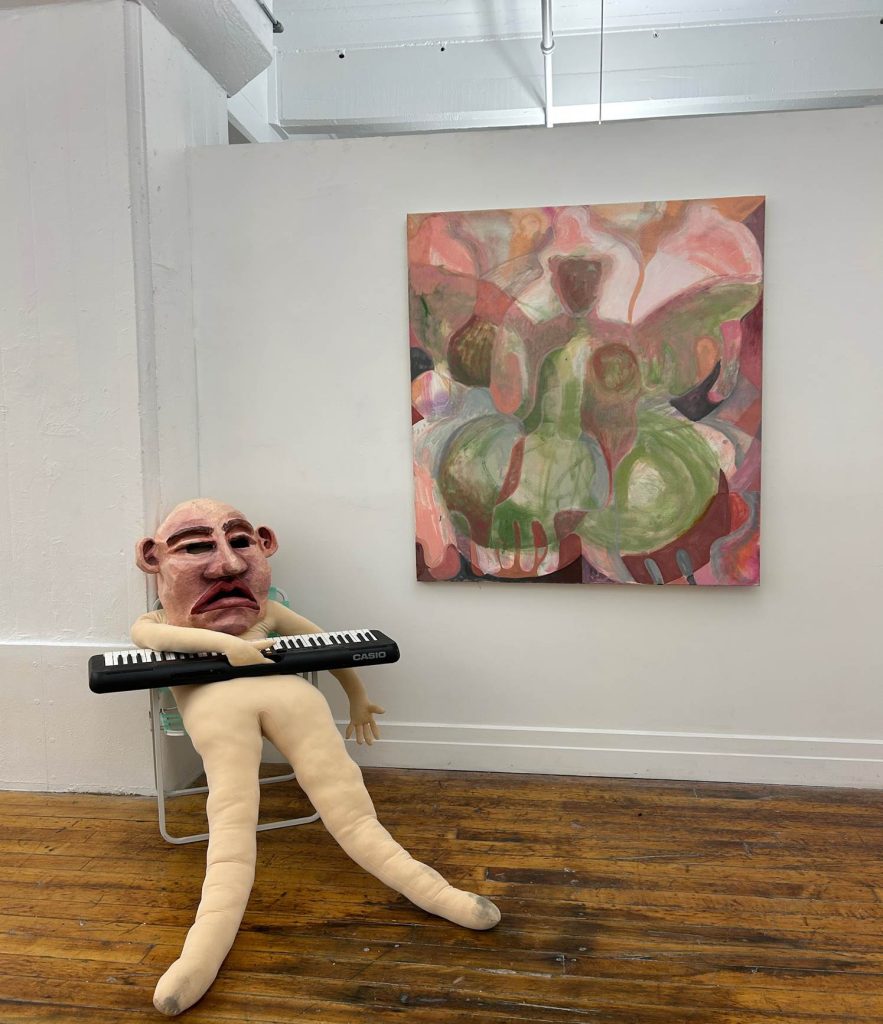
On the wall right opposite of Unbound, in the piece with the reclining nude, titled Reclining Figure by Yael Herzog, or the ceramic works nearby in conversation with the painting, titled Little Black Dress by Irit, also pictured below, I felt the importance of pose. Reading experience through gestures. While these works were more outrightly figurative, they left the question of how we should view them. Was what they were experiencing, in such relaxed or tense poses (the ceramic figure sitting rather contemplatively) meant to be experienced by all or only a few? Along with being human is also having to deal with experiences that are both public and private and how they are then perceived. This carries with it a complex experience that is constantly growing, changing with each passing viewpoint, however, in today’s world especially, when everything is often in the spotlight, the views of others cannot often be avoided.
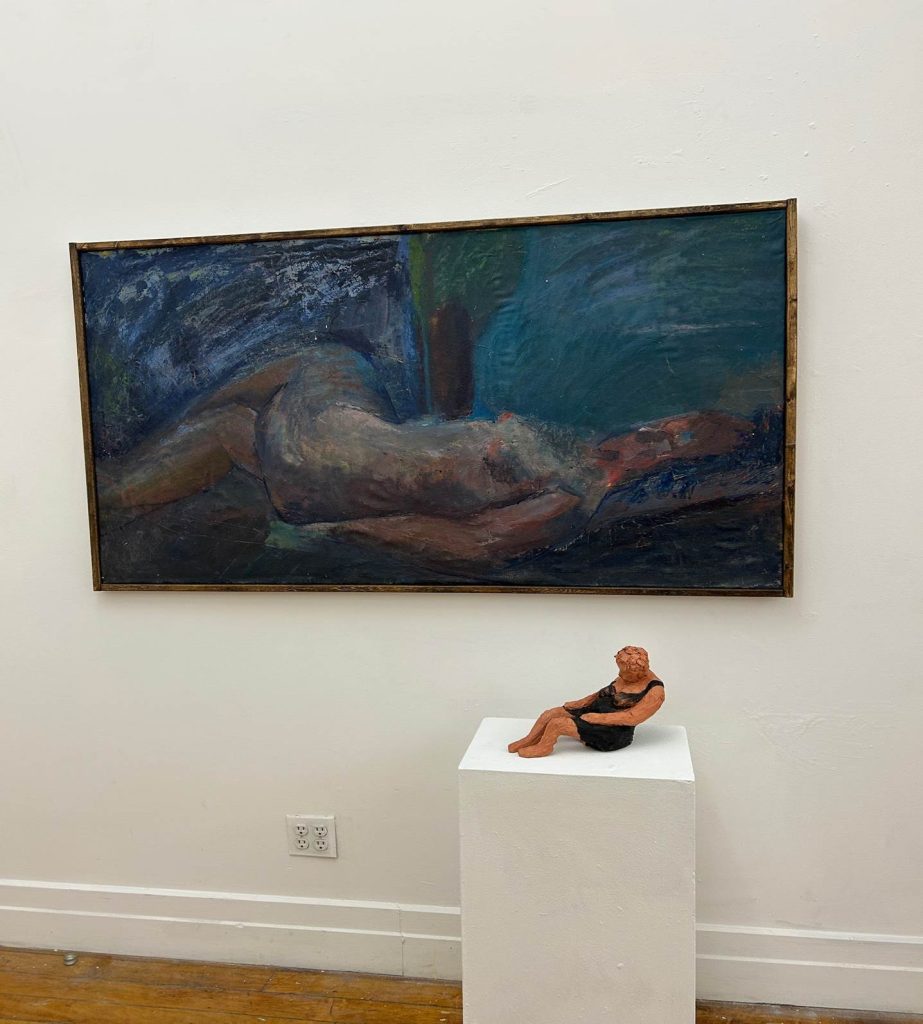
This push and pull between public versus private views also led me to think about internal and external thoughts that people may have on a daily basis. Thoughts of contemplation and consideration and inspiration. All of which came together by these three pieces on the right area of the gallery and from the work of Suzanne Scott with the painting Nine Muses, and the piece Amagansette by Charity Baker. The figures in these paintings are depicted deep in thought, or quiet consideration, of what we do not know, but we can empathize with each one. We can understand these feelings, as we might have had our share of these moments ourselves, and the compositions of a long deserted roadway, or a dark forest leave it all open to interpretation. Are these thoughts unconscious traumas, or are they uncertain dreams? The artists each give viewers the opportunity to stand alongside these pieces and wonder- or if they feel compelled to, join in the contemplation.
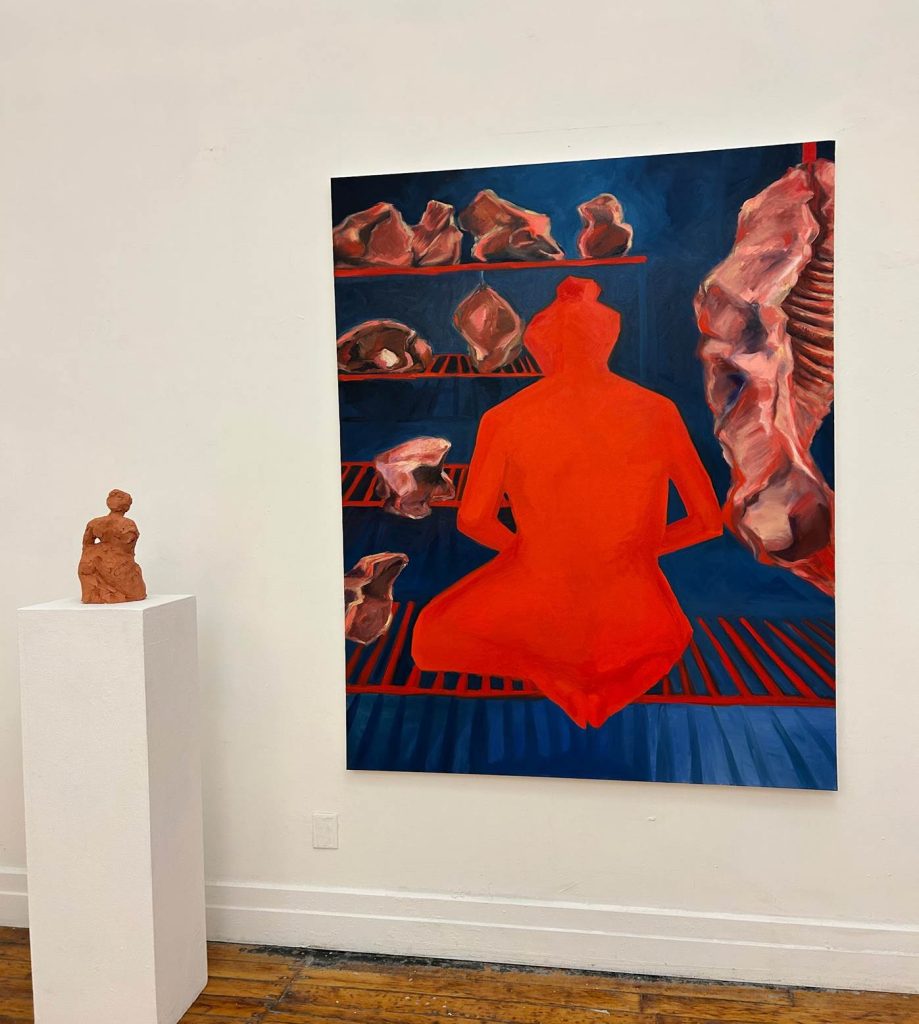
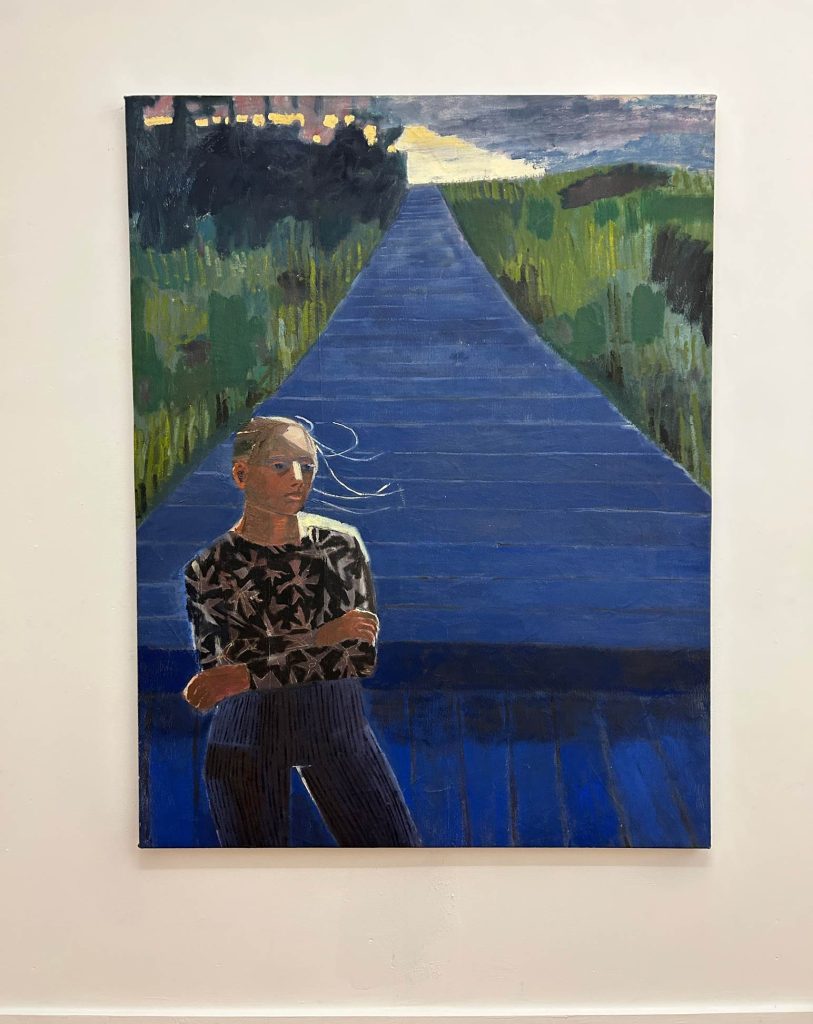
Ana Jungle-Wagner’s work Affirmations with the yellow notes stating “if I could tell you how sorry I am” was very impactful. These simple words carry so much weight, so much context without needing to show too much. This phrase repeated all across this board resembles a constant worry or anxiety that people face. The weight our own affirmations may carry. This piece does well to show the internal side to being human, and the impact it holds. Internal struggles are often tossed aside or dismissed, because putting on a good face has become the preferred way, however, like these yellow pieces of paper, the thoughts still linger, ever persistent, and ever expanding.
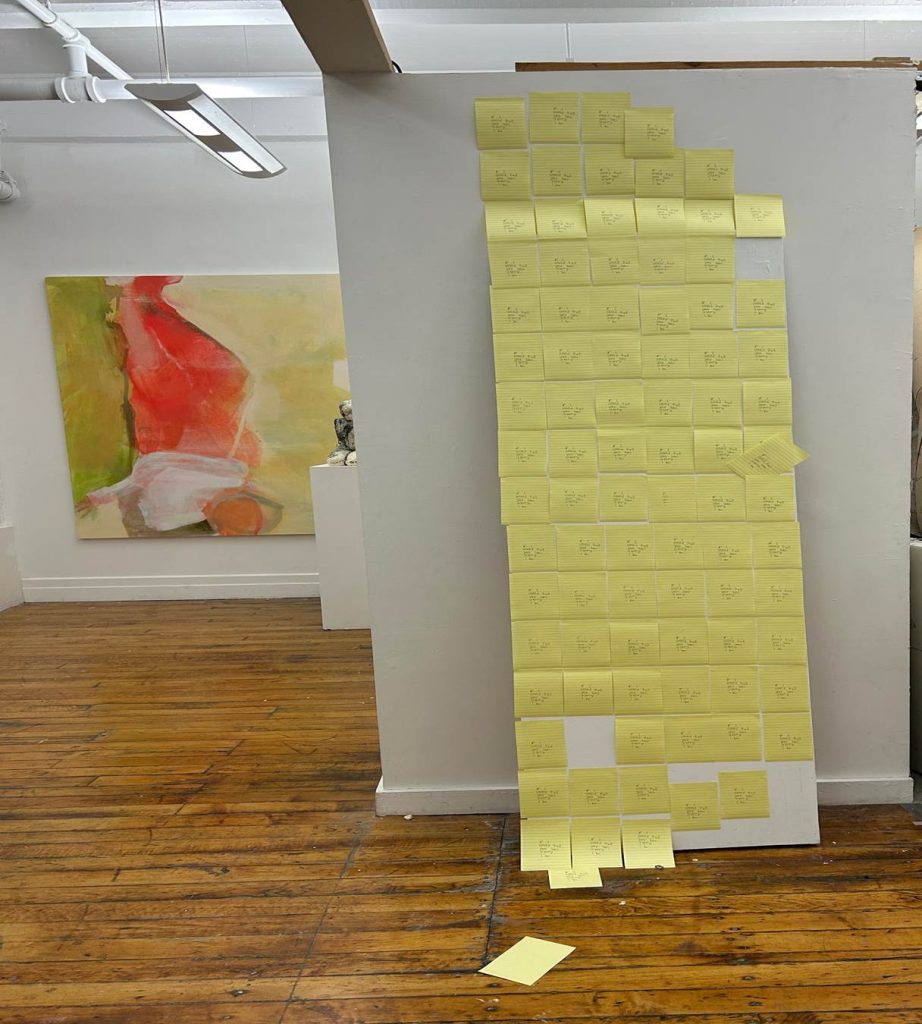
This exhibition upholds the title of Figuring the Layers of Being well. Each artist takes a layer of humanity and uses their work to build upon it or begin a conversation about it. Whether it be the larger scaled paintings by Cee Cee Belford or Narelle Sissions, who both piece together the human form on the canvas, while the ceramics by Anki King, Irit Baniel, Yael Herzog, and Narelle Sissons bring the figure into full form and shape. While the layers are not overtly literal, viewers must consider the title, placement of the works with others, and how they react to the pieces to perhaps fully understand the range of being this show presents. It is worth spending time within, to experience all of the variety and voices expressed within the works here, and possibly join in on the conversations on what it means to be human.
All images provided by Taylor Bielecki
UNBIND: FIGURING THE LAYERS OF BEING- At New York Studio School curated by Narelle Sissons at 20 Jay Street, Suite #307, June 5th – July 7th, 20 Jay Street, Brooklyn, NY 10011
About the Writer: Taylor Bielecki lives in Gowanus, where her studio is, and works at Pratt Institute, where she earned her MFA, she also studied at Penn State, where she earned a BA in English and a BFA in Fine Arts. She finished as a finalist in the Kennedy Center’s VSA National Emerging Young Artist program for 2017; where she earned an award of Excellence. She has shown prints internationally in a print exchange in Australia and exhibitions in Dubai, India and the Glasgow School of Art. She has also shown paintings internationally in Gallery 24N, PhilaMOCA’s juried exhibitions in Philadelphia, Pa., Perry Lawson Fine Art in Nyack, NY, BWAC in Red Hook, and Greenpoint Gallery in Brooklyn. Taylor has joined Art Spiel as a contributing writer.